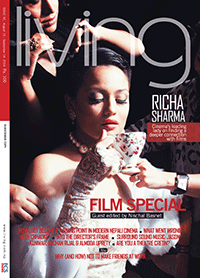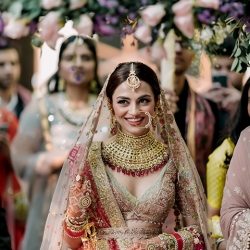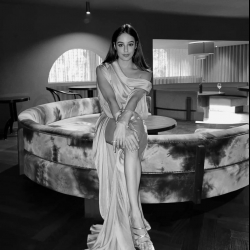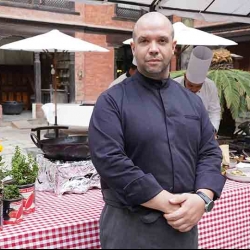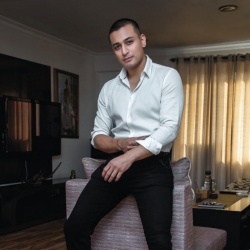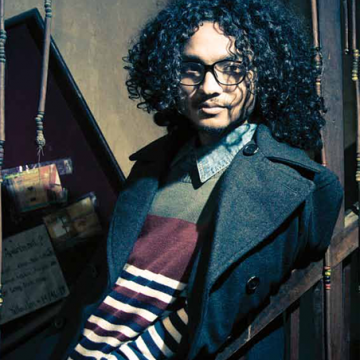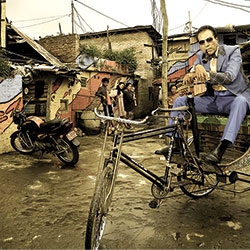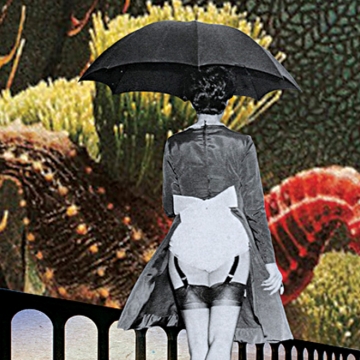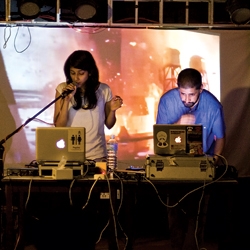
5 YEARS OLD BY ARNAV MAN SINGH (ON DISPLAY IN KATHMANDU ART HOUSE)
This is the 5-year-old living inside me, expressing his own reality with a broad horizon for what can be achieved. Reliving the antireality of the innocent past.

TWO WEIRDOS - Arnav Man Singh (MONA collection)
One of them is what I am expected to be and the other is what I want to be. Do I become what I’m expected to be and become a weirdo for myself
or do I become who I want to be and become a weirdo for the world?

TIMELESS TOGETHERNESS -
Jugal Rajbhandari in collaboration with Shrusha Shrestha (on display at Kathmandu Art House)
“Abstract art is the ideal visual mode to express the "inner necessity" of the artist and to convey universal human emotions and ideas.” said Wasily Kadinsky, the pioneer of abstract. The abstract genre is the expression of an artist’s inner reality without external reference. It has an inner voice that delivers a message, engaging both artist and audience to a distinct sense of freedom and expression. It is chaotic and spontaneous. Feelings don’t have a clear structural definition; it comes out in pure free flowing fluidity of colour, shape, form, and texture. Bal Krishna Sama, was the first artist to execute abstract paintings in Nepal. Sama created nine abstract paintngs for the nine poems he composed titled “Navaranga,” sometime in the 1950s. Lain Singh TIMELESS TOGETHERNESS - Jugal Rajbhandari in collaboration with Shrusha Shrestha (on display at Kathmandu Art House) Bangdel is considered the father of Nepali modern art for introducing abstract trends. Though he was an art historian, teacher and novelist, he is best remembered for his abstract expressions of Nepal’s landscape. His contemporaries were Laxman Shrestha and Uttam Nepali. All three are considered to be the fathers of Nepali abstract. While Lain Singh Bangdel and Laxman Shrestha took the genre of landscape into abstract, glorifying the Himalayas in their own unique style, Uttam Nepali synthesized abstract techniques in traditional Nepali art. Many other prominent names of abstract include Shankar Nath Rimal, Gahendra Man Amatya, Indra Pradhan, Shashi Shah, Batsa Gopal Vaidya, Kiran Manandhar among others. However, art researcher Krishna Prakash Shah writes in his book “Nepali Abstract Painting: A Development Analysis,” that most Nepali abstractionists have not completely delved into the realm of abstract as per Wasily Kandinsky’s theory. Kandinsky seeks for an entirely original form that embodies the arousal of a spiritual essence from free-flowing spontaneity whereas many Nepali abstractionists work appears to be preplanned as per Shah’s analysis. Today two young Nepali abstract expressionists are breaking this barrier with their intense understanding of the genre - Arnav Man Singh, and Jugal Rajbhandari. Their art is not a piece to just interpret or to understand. It is an experience to immerse in, to unfold the entanglements of your emotion and come out with a deeper meaning of your existence. These young brooding artist philosophers in their 20s, unravel the intricacies of your shrouded thoughts which you haven’t been able to deconstruct. They are wiser beyond their years; and they create because the standard universal explanations do not clearly illuminate all human emotions. A human mind and heart is too complex to comprehend, the underlying currents need more immersive explanations and these two artists do a fantastic job in unravelling them.

Arnav Man Singh brings to light the hidden truth. His art unfolds the multiple personifications of a conscious and subconscious mind. The inner reality that feels more real than the outer reality. The struggles that feel more real than the success. The existence that feels more alive when you are just living than when you are achieving. The beauty of creativity that unfolds when you are insignificant than when you feel the importance of your significance. All polarity of emotions that are out of the box. If you get him, you will love him, if you don’t, then you need to introspect your feelings more. Most of his philosophy behind his art is inspired by Carl Jung’s theory of psychoanalysis. The division of personality into four main archetypes – The Persona (how we present ourselves to the world), the Shadow (the unconscious mind of repressed ideas and desires), the Anima and Animus (the feminine in the male and the masculinity in the female) and the Self (the integration of consciousness and unconsciousness of a person). "Their art is not a piece to just interpret or to understand. It is an experience to immerse in, to unfold the entanglements of your emotions and come out with a deeper meaning of your existence. These two artists unravel the intricacies of your shrouded thoughts which you yourself at times cannot deconstruct". A highly intriguing concept is his own definition of anti-reality which is the inspiration behind many of his paintings. “Anti-reality is a space where reality does not exist. It is a rejection of proof. Just like I do not need to prove my existence. My existence is an interpretation. A version of me exists in you through your interpretation, but I have so many versions of me, so many interpretations of me that co-exist and contradict. I am a contradiction in a reality of proof. I can only be ME in anything that is not “real.” Thus, I create my anti-reality. I create my existence, I create ME.” The powerful synergy statement from a young artist cum philosopher.
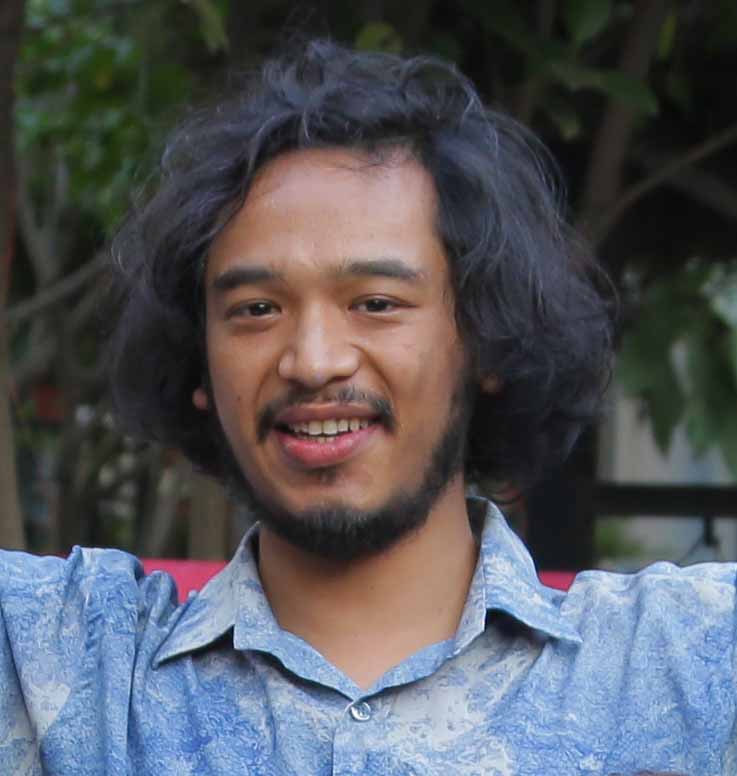
Jugal Rajbhandari delves deep into the subconscious and paints without any preconceived notions of what should come on canvas. He just lets his mind flow letting his subconscious direct him. His style consists of abstract figurative expressions, mark making, cryptograms, expressionist brush-strokes usually drawing inspirations from various branches of philosophy, psychology, etymology, oneirology (study of dreams), mythology, linguistics and esoteric texts. The power of the subconscious is again Carl Jung’s belief that the human psyche is composed of firstly the personal unconscious; memories and feelings including those repressed and then the collective unconscious which is psychological inheritance of knowledge and experiences that humans share as a species. Jugal’s personal unconscious eventually becomes a collective unconscious as he shares it on canvas letting viewers interpret and identify his outpouring of expressions. The hallmark of his abstraction is that he himself interprets his art only after it is finished. While painting, he is in an illusionary state of semi-consciousness. In his own words, Jugal says “I believe my abstract expressions are my subconscious mind talking to me through the language of symbols. They say a picture speaks a thousand words but I believe a symbol portrays a thousand pictures. These paintings are like puzzles and cryptograms, these symbols want me to decipher itself to ascend on the path of higher personal development and introspection.” He further explains himself saying “I have this excruciating urge to create only for the sake of creating. Like you’re diving deep into the ocean within yourself, looking over infinite bodies of ideas, thoughts, concepts - randomly choosing one and shaping it into existence. The process of creating each artwork feels like meeting a stranger riding along my train of thoughts then becoming best friends by the end of it.” The words and explanations of these two bedazzle you, strike you like lightening. Their art is therapeutic as you go on a process of self-analysis in interpreting their fiery passion on canvas. Studying the art of these budding powerhouse talents, one realises that the mind and heart is an endless pit; the more you dig, the more you uncover. The more you uncover, the more you understand yourself better. Their art takes you on a journey of infinite internal exploration. A spiritual ride that Kandinsky believes true abstract art to be!

FAMILY UNION - Jugal Rajbhandari (private collection)
The layers of connections within a family. A bond so close yet conflicting. Nevertheless, it's blood that saves the day.

